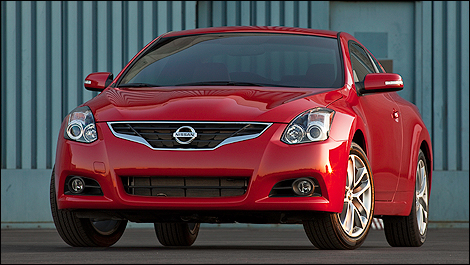Aug
31st
Stay connected Subscribe to our RSS feed
Fuel economy: It's all the rage in the new car market and an attribute that's becoming more a part of the purchase decision than ever before. Some rides go a step further than just saving fuel -- doing it in a way that manages to deliver a fantastic driving experience through compromise-free performance.
Here's a look at a few of the most memorable fuel-saving technologies I've tested, the cars that use them, how they work, and why you should test drive one.
Hyundai Sonata Bluedrive Hybrid
How it Saves Fuel: This is a hybrid version of the standard Sonata that uses a special “lithium polymer” battery. Hyundai engineers say it has more energy density and capacity than the “lithium ion” batteries used in most hybrid cars. Extended “electric-only” driving range is one of the key benefits.
Why Test Drive: You can see and feel the fuel-saving hybrid system working every time you drive this car -- especially when it kicks into full electric “EV” mode at highway speeds. (Most hybrids can operate solely on voltage at parking-lot speeds). Despite the extended electric-driving capabilities, a 6-speed automatic transmission maintains a conventional driving feel.
Volkswagen Jetta TDI
How it Saves Fuel: Diesel contains about a third more energy per unit than gasoline, so fuel savings here come from the fuel itself rather than the addition of a hybrid system. Jetta TDI further maximizes mileage with an available high-efficiency “Direct Shift Gearbox” or DSG.
Why Test Drive: Along with delivering great mileage without changing driving habits, the Jetta TDI is torque-y as all heck -- meaning that it hauls along with authority when you give it the boot. It's also smooth, very refined and very quiet. The DSG gearbox furthers all of this with instant, lightning-fast and imperceptible gearshifts. Going 180 kilometres or more before the fuel gauge drops from full is nice, too.
Nissan Altima Coupe
How it Saves Fuel: Lightweight engine construction, variable valve timing and a CVT transmission team up to make this one of the most fuel-efficient, fun coupes I've ever driven.
Why Test Drive: This is how a CVT transmission should be set up: Rather than groaning along, it provides a never ending wave of acceleration, instant access to the V6 engine's power curve, and can even make pretend gear shifts to make you feel like you're just driving a really responsive automatic. I left the Altima Coupe impressed with overall mileage and fun factor.
Audi A7
How it Saves Fuel: The A7 is one of a slew of cars using a small-displacement, forced-induction engine in place of a larger, thirstier powerplant. A 3.0L, direct-injected V6 and supercharger serve up 310 horsepower and even more torque.
Why Test Drive: Using a supercharger instead of a turbocharger, engineers managed to create absolutely lag-free access to power output on par with a V8 -- though you'll put away less than 7L /100km cruising the highway in no rush. Beats feeding a bigger, thirstier, heavier engine all the time.
Here's a look at a few of the most memorable fuel-saving technologies I've tested, the cars that use them, how they work, and why you should test drive one.
Hyundai Sonata Bluedrive Hybrid
 |
| Photo: Hyundai |
How it Saves Fuel: This is a hybrid version of the standard Sonata that uses a special “lithium polymer” battery. Hyundai engineers say it has more energy density and capacity than the “lithium ion” batteries used in most hybrid cars. Extended “electric-only” driving range is one of the key benefits.
Why Test Drive: You can see and feel the fuel-saving hybrid system working every time you drive this car -- especially when it kicks into full electric “EV” mode at highway speeds. (Most hybrids can operate solely on voltage at parking-lot speeds). Despite the extended electric-driving capabilities, a 6-speed automatic transmission maintains a conventional driving feel.
Volkswagen Jetta TDI
 |
| Photo: Rob Rothwell |
How it Saves Fuel: Diesel contains about a third more energy per unit than gasoline, so fuel savings here come from the fuel itself rather than the addition of a hybrid system. Jetta TDI further maximizes mileage with an available high-efficiency “Direct Shift Gearbox” or DSG.
Why Test Drive: Along with delivering great mileage without changing driving habits, the Jetta TDI is torque-y as all heck -- meaning that it hauls along with authority when you give it the boot. It's also smooth, very refined and very quiet. The DSG gearbox furthers all of this with instant, lightning-fast and imperceptible gearshifts. Going 180 kilometres or more before the fuel gauge drops from full is nice, too.
Nissan Altima Coupe
 |
| Photo: Nissan |
How it Saves Fuel: Lightweight engine construction, variable valve timing and a CVT transmission team up to make this one of the most fuel-efficient, fun coupes I've ever driven.
Why Test Drive: This is how a CVT transmission should be set up: Rather than groaning along, it provides a never ending wave of acceleration, instant access to the V6 engine's power curve, and can even make pretend gear shifts to make you feel like you're just driving a really responsive automatic. I left the Altima Coupe impressed with overall mileage and fun factor.
Audi A7
 |
| Photo: Justin Pritchard |
How it Saves Fuel: The A7 is one of a slew of cars using a small-displacement, forced-induction engine in place of a larger, thirstier powerplant. A 3.0L, direct-injected V6 and supercharger serve up 310 horsepower and even more torque.
Why Test Drive: Using a supercharger instead of a turbocharger, engineers managed to create absolutely lag-free access to power output on par with a V8 -- though you'll put away less than 7L /100km cruising the highway in no rush. Beats feeding a bigger, thirstier, heavier engine all the time.
 The latest auto news, reviews, prices, product and vehicle releases.
The latest auto news, reviews, prices, product and vehicle releases.